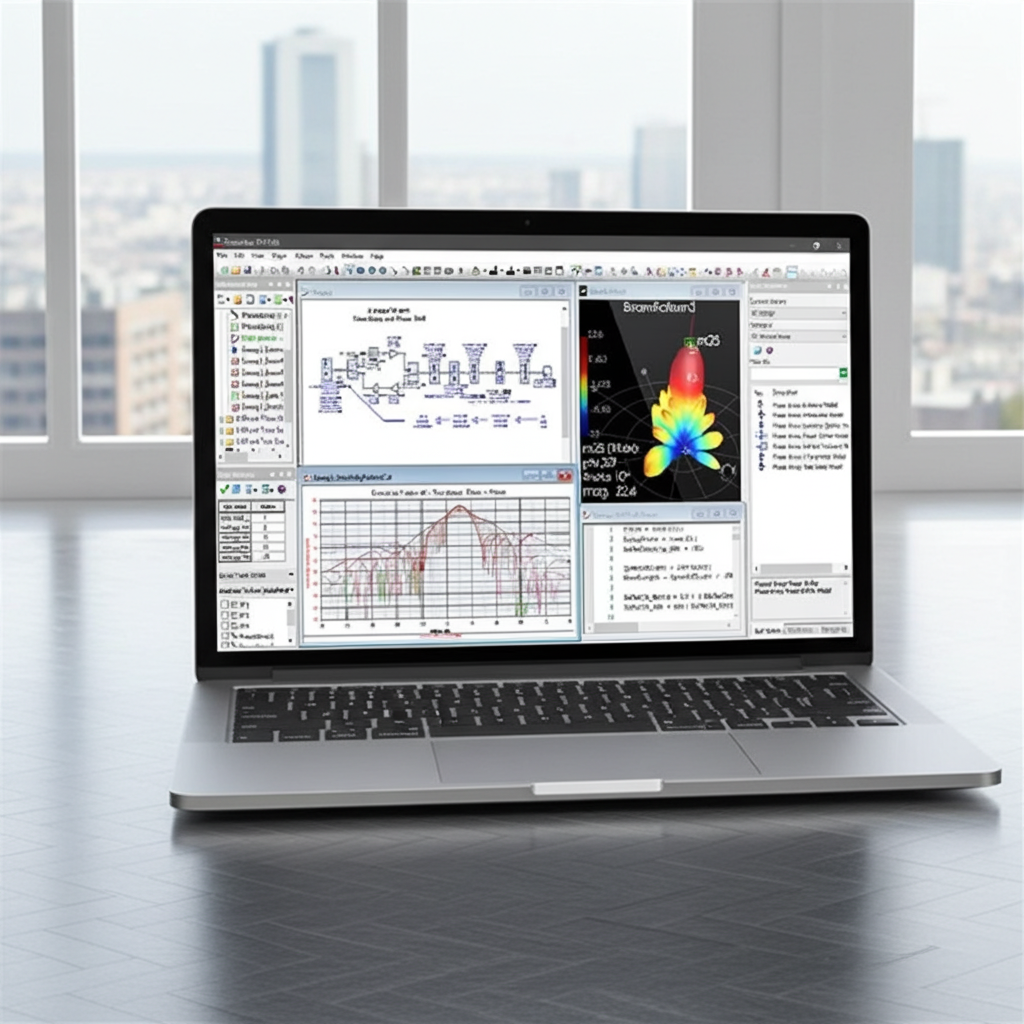There was an issue with saving this content. Please try again.
There was an issue with removing this item from your saved content. Please try again.
RF System Simulation
Learn about the spectral domain techniques, Intermodulation, bringing RF system effects into baseband DSP
About this course
+ Learning Objectives
- Spectral domain techniques for system design
- RF architecture design and SPARCA, how Spectrasys works, channel and path definitions, level diagrams and spectrum plots and analysis settings.
- Lab 1: You will create a system schematic, set up a Spectrasys RF system analysis, create power spectrum plots, add a level diagram, extend the system architecture with additional parts and adjust the signal power.
- Intermodulation and more
- S-parameters, X-parameters, MDIF import, frequency dependencies, intermodulation and compression, MultiSource, an amplifier example, sweeps and other evaluations (Optimization, Monte Carlo and Yield).
- Lab 2: You will look at FM receiver design issues, improve receiver performance. You will become familiar with intermodulation measurements and optimization of the design for overall system performance.
- Bringing RF System effects together with modulated, time domain waveforms.
- Theory of operation, thermal noise, amplifier compression, multiple input and output, control pins, RF-chain with real modulation, the RF_Link component and setup.
- Lab 3: Data Flow top level analysis using RF subcircuits.
+ Content Types
- Video Lessons
- Hands-on Labs
- Knowledge Check
+ Who should take this course?
- Engineers who create DSP circuits and System Architecture designers
+ Prerequisites
Curriculum8 hr 22 min
-
Spectrasys - Part I
-
Spectral Domain Techniques 40 min
-
-
Lab 1: Spectrasys Basics 95 min
-
-
Spectrasys - Part II
-
-
MDIF Import and Interpolated Datasets 2 min
-
Frequency Dependent Parameters 2 min
-
Intermodulation, Sweeps and more 34 min
-
Lab 2: FM Receiver Design Analysis 150 min
-
-
RF Link
-
-
Theory of Operation 6 min
-
-
Amplifier Compression 2 min
-
Multiple In- and Outputs, Control Pins 4 min
-
RF-Chain with Real Modulation 2 min
-
Lab 3: Data Flow Analysis on FM Receiver Design 120 min
-
-
Summary and Next Step
-
About this course
+ Learning Objectives
- Spectral domain techniques for system design
- RF architecture design and SPARCA, how Spectrasys works, channel and path definitions, level diagrams and spectrum plots and analysis settings.
- Lab 1: You will create a system schematic, set up a Spectrasys RF system analysis, create power spectrum plots, add a level diagram, extend the system architecture with additional parts and adjust the signal power.
- Intermodulation and more
- S-parameters, X-parameters, MDIF import, frequency dependencies, intermodulation and compression, MultiSource, an amplifier example, sweeps and other evaluations (Optimization, Monte Carlo and Yield).
- Lab 2: You will look at FM receiver design issues, improve receiver performance. You will become familiar with intermodulation measurements and optimization of the design for overall system performance.
- Bringing RF System effects together with modulated, time domain waveforms.
- Theory of operation, thermal noise, amplifier compression, multiple input and output, control pins, RF-chain with real modulation, the RF_Link component and setup.
- Lab 3: Data Flow top level analysis using RF subcircuits.
+ Content Types
- Video Lessons
- Hands-on Labs
- Knowledge Check
+ Who should take this course?
- Engineers who create DSP circuits and System Architecture designers
+ Prerequisites
Curriculum8 hr 22 min
-
Spectrasys - Part I
-
Spectral Domain Techniques 40 min
-
-
Lab 1: Spectrasys Basics 95 min
-
-
Spectrasys - Part II
-
-
MDIF Import and Interpolated Datasets 2 min
-
Frequency Dependent Parameters 2 min
-
Intermodulation, Sweeps and more 34 min
-
Lab 2: FM Receiver Design Analysis 150 min
-
-
RF Link
-
-
Theory of Operation 6 min
-
-
Amplifier Compression 2 min
-
Multiple In- and Outputs, Control Pins 4 min
-
RF-Chain with Real Modulation 2 min
-
Lab 3: Data Flow Analysis on FM Receiver Design 120 min
-
-
Summary and Next Step
-
